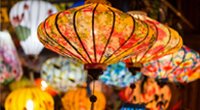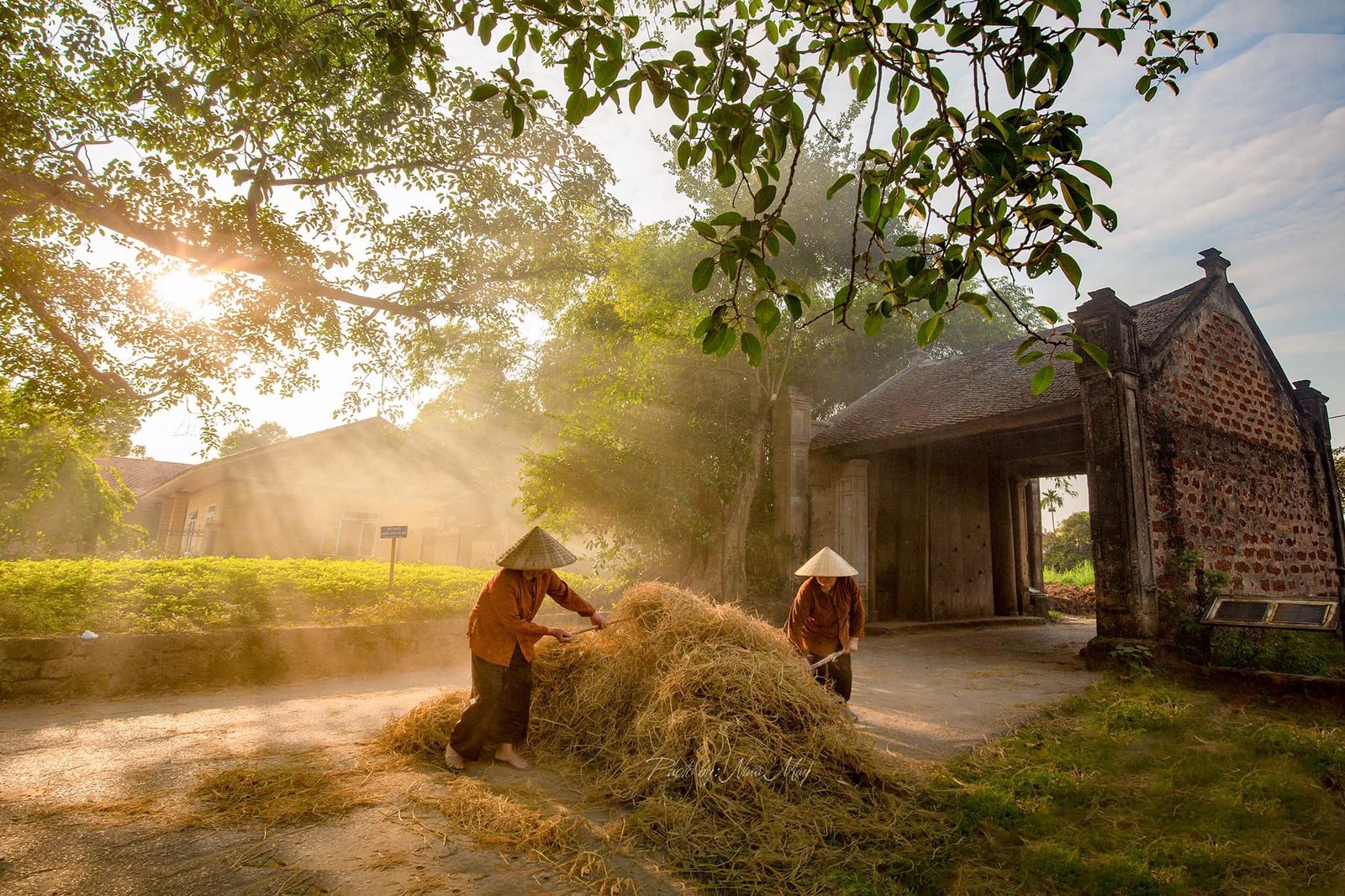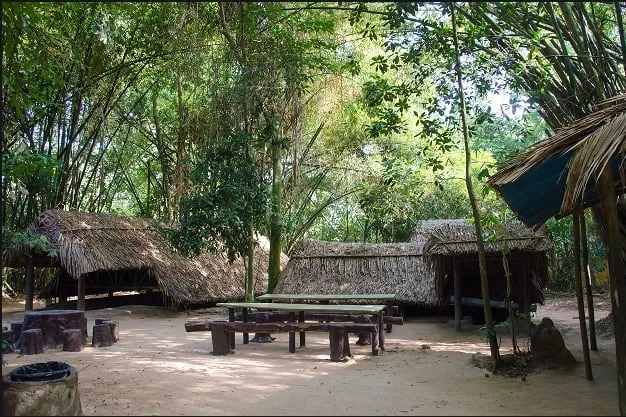Contents
ToggleA Millennium-Old Village
About 40 km west of Hanoi, in Son Tay District, lies Duong Lam Ancient Village, dating back to the 11th century. Unlike many places that have modernized, Duong Lam still preserves its original village layout, making it a rare living museum of rural Vietnam.
Highlights include:
- Mong Phu Gate (1833): The only surviving ancient gate of the village, shaded by a 300-year-old banyan tree.
- Mong Phu Communal House (1553): A sacred site dedicated to Saint Tan Vien and the village guardian deities.
- Birthplace of kings: Duong Lam is the hometown of Phung Hung (resistance leader) and Ngo Quyen (victor of the Battle of Bach Dang in 938, ending 1,000 years of Chinese rule).
- Village Festival: Held on the 10th day of the first lunar month, the festival features cockfighting, human chess, and other folk games.
Walking through Duong Lam feels like traveling back a thousand years, where history blends seamlessly with everyday village life.
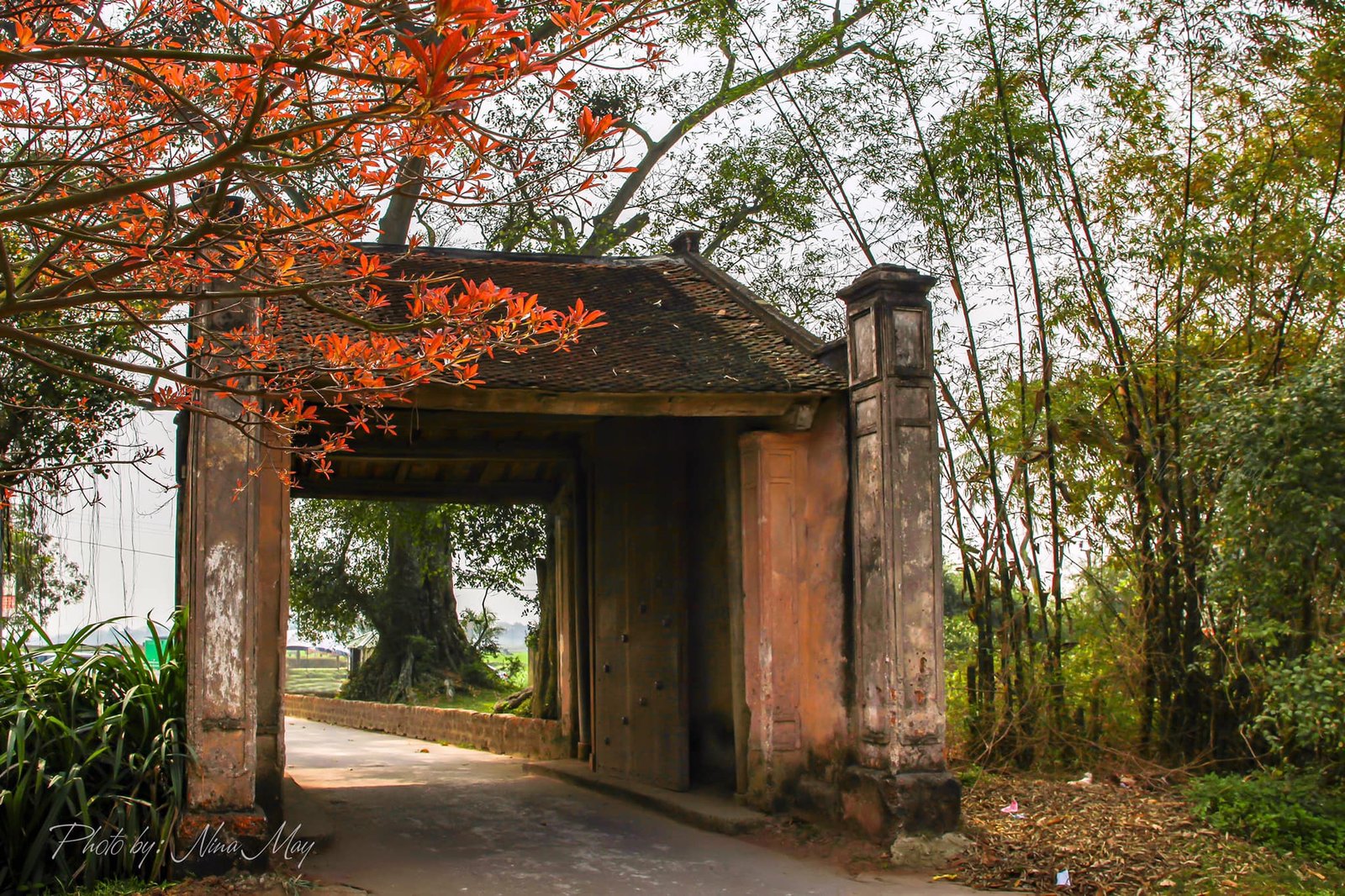
Laterite Houses of Duong Lam
One of Duong Lam’s most distinctive features is its laterite houses, nearly 1,000 of which still remain, with some over 300 years old. Built from reddish laterite stone, bamboo, wooden beams, and terracotta tiles, these homes are both rustic and remarkably durable.
Typical architectural elements include:
- Five compartments with a central family altar.
- Mossy terracotta roofs resembling fish scales.
- Old wells, shaded courtyards, and fruit trees that complete the peaceful village atmosphere.
Visitors can explore historic residences such as Mrs. Dien’s 200-year-old house or Mr. Hung’s traditional home, where you may even discover the age-old process of making soy sauce.
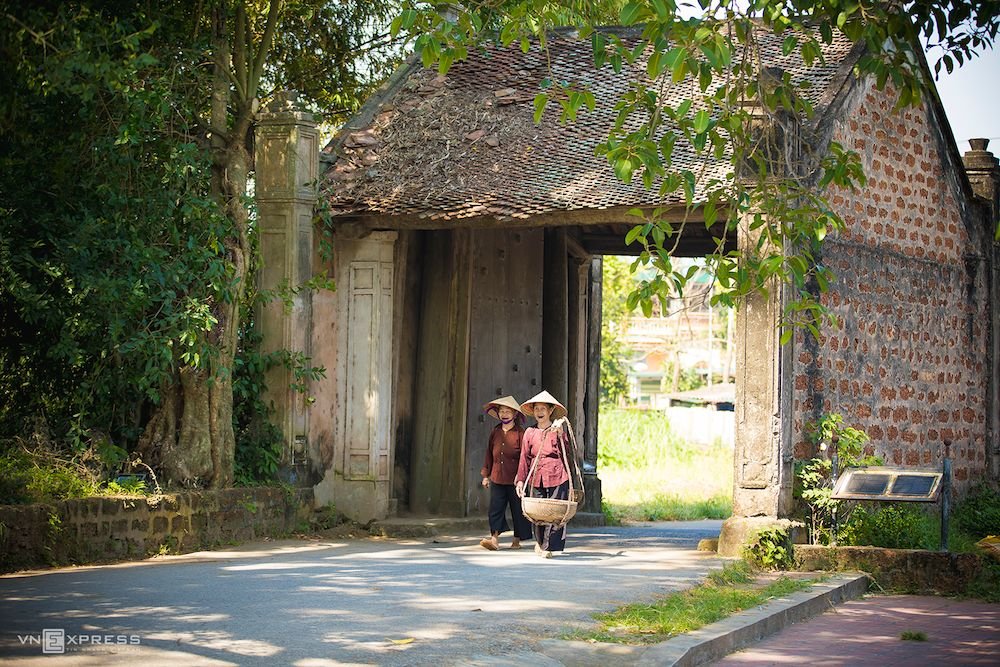
Ancient Wells of Duong Lam
Water has always been at the heart of rural life, and Duong Lam’s ancient wells—built from rough laterite blocks—still play a vital role in the community. Scattered across the hamlets, each well is more than just a water source; it carries the name, history, and identity of its neighborhood, such as Sai Well, Dong Sang Well, or Giang Well.
Among the most revered are:
- Phu Well (Right Eye): Considered sacred, its water is reserved for cooking and for the traditional craft of soy sauce making, a specialty of Duong Lam.
- Mieu Well (Left Eye): Used for daily washing and household activities, symbolizing the balance between the practical and the spiritual.
- Milk Well: Steeped in folklore, it is believed that its water could help nursing mothers restore their milk supply, a story passed down through generations.
These wells do more than quench thirst—they reflect the village’s harmony with nature and embody the spiritual beliefs that connect daily life to ancient traditions. For locals, drawing water from these wells is not only a necessity but also a ritual that keeps the memory of their ancestors alive.
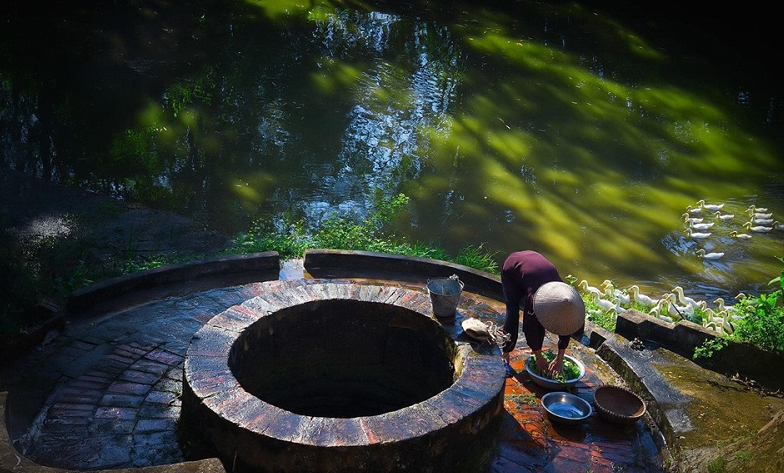
The Beauty of Harvest Season
Agriculture has been the lifeblood of Duong Lam for centuries, with over 90% of households still cultivating rice. The rhythm of village life follows the planting and harvesting cycles, and nowhere is this connection more visible than during the harvest season in May.
At this time, the countryside transforms into a golden sea of ripened rice, shimmering under the summer sun. Walking through the fields, you’ll breathe in the earthy scent of freshly cut straw, hear the rhythmic thud of wooden flails threshing rice, and see farmers in conical hats working side by side, their laughter carrying across the paddies.
Harvest time is not just about labor—it is also a period of celebration. Families come together to share meals, offer thanks at communal houses, and honor the spirits of the land that have blessed them with abundance. For visitors, witnessing this season is like stepping back into a slower, more harmonious era of Vietnamese rural life, where nature and community remain inseparably linked.
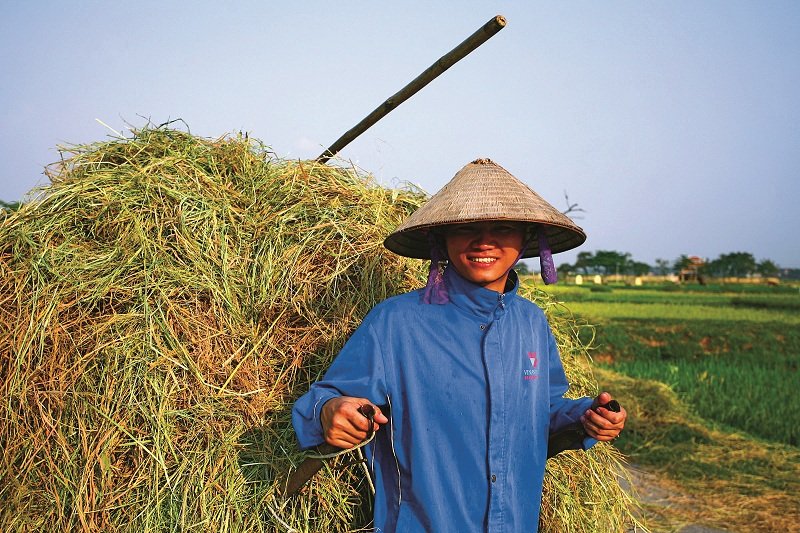
Duong Lam’s Culinary Specialties
No visit to Duong Lam is complete without tasting its traditional foods, which reflect both the ingenuity of the villagers and the abundance of the land. Many of these specialties are still prepared using recipes handed down for generations, often in the courtyards of laterite houses.
- Soy sauce (tương): Perhaps the village’s most famous product, Duong Lam soy sauce has been crafted for centuries. Made from glutinous rice, soybeans, and salt, it is slowly fermented in clay jars left to mature under the sun. The result is a fragrant, savory condiment that has become a staple in northern Vietnamese cooking. Visitors may even get the chance to see the fermentation jars lined up in family courtyards.
- “Che Lam”: A chewy, sticky treat traditionally offered during Lunar New Year and village festivals. It combines glutinous rice flour, ginger, and peanuts, producing a warming, nutty flavor that pairs perfectly with a cup of green tea.
- Countryside sweets: Duong Lam is also known for its simple yet delicious confections, such as peanut candy, sesame candy, and black sticky rice cake. These rustic treats capture the taste of rural Vietnam and are often sold by villagers in small, handmade packages.
Food here is more than sustenance—it is a way of preserving cultural identity. Sharing a meal or tasting a local snack in Duong Lam is like savoring centuries of tradition in every bite.
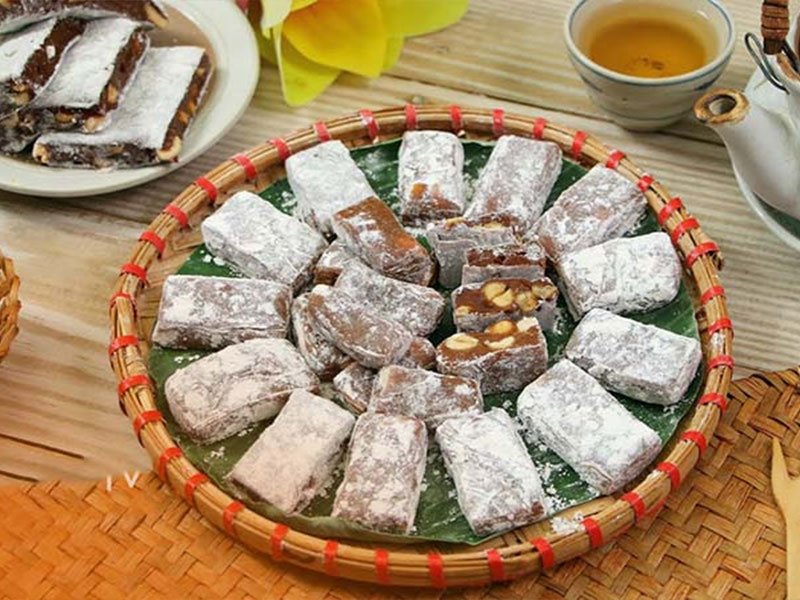
FAQ: Visiting Duong Lam Ancient Village
When is the best time to visit?
Duong Lam can be visited year-round, but two periods stand out:
- May–June (harvest season): Golden rice fields create stunning scenery.
- Tet (Lunar New Year): The village is lively with traditional celebrations and festive foods.
How long should I stay?
A day trip from Hanoi (around 1.5–2 hours by car or bus) is enough to see the highlights. For those who want to slow down, you can stay overnight in a local homestay, enjoy a home-cooked meal, and experience the peaceful countryside after day-trippers leave.
What should I see?
- Mong Phu Gate & Banyan Tree (1833): The symbolic entrance to the village.
- Mong Phu Communal House (1553): A beautiful wooden structure dedicated to Saint Tan Vien and village deities.
- Laterite houses: Step into centuries-old homes and see rural life preserved.
- Ancient wells: Each with its own history and spiritual significance.
- Soy sauce workshops: Learn about the village’s most famous culinary craft.
Is there an entrance fee?
Yes, visitors pay a small entrance fee (around 20,000 VND), which helps fund preservation efforts and supports the local community.
How do I get there?
- By bus: Public buses run from Hanoi to Son Tay, where you can take a short taxi ride to the village.
- By car or motorbike: The fastest and most flexible option, taking about 1.5 hours from Hanoi.
- By tour: Many Hanoi-based travel agencies offer guided day trips with meals included.
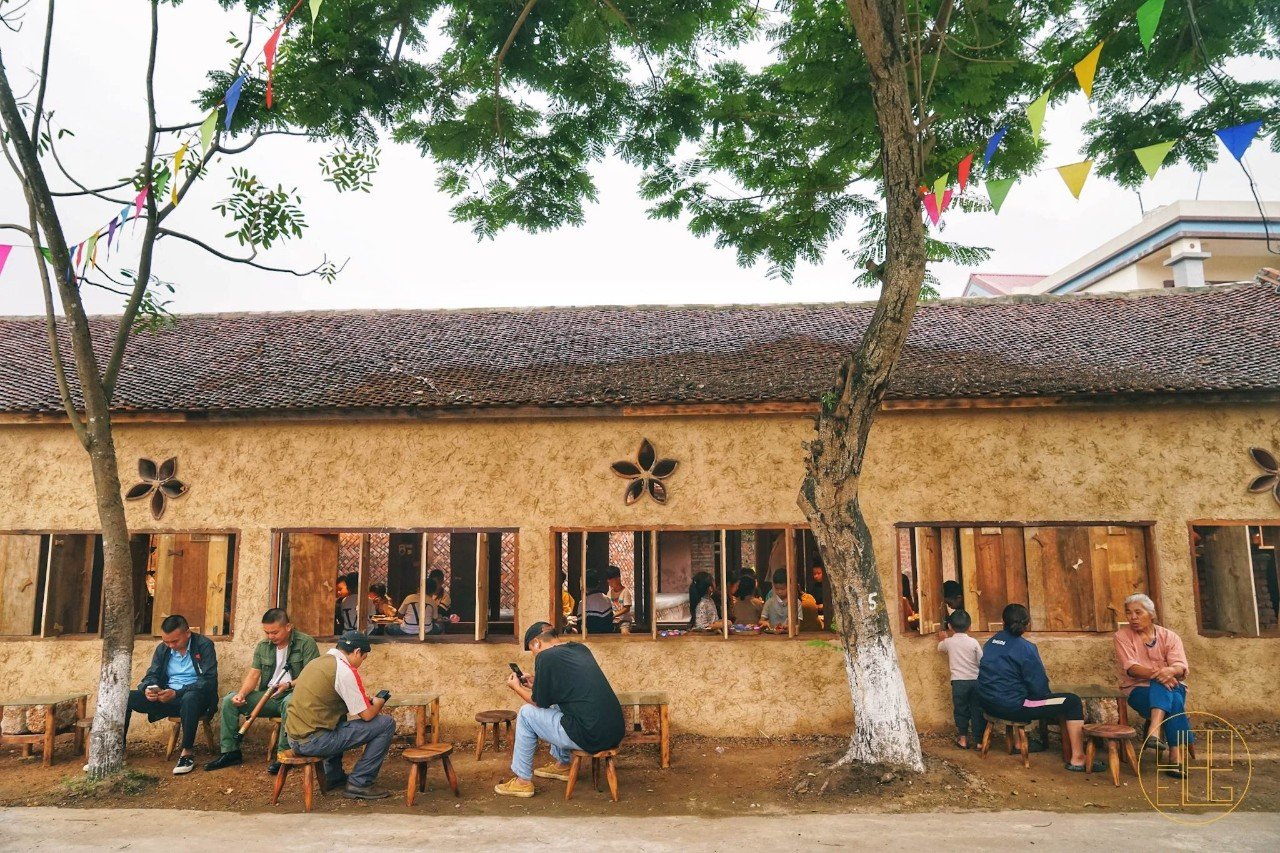
Final Thoughts
Duong Lam Ancient Village is more than just a tourist spot—it’s a living museum of Vietnam’s countryside. With its thousand-year-old heritage, laterite houses, sacred wells, golden rice fields, and culinary traditions, it offers a deep cultural journey into rural life.
For travelers seeking an escape from Hanoi’s busy streets, Duong Lam promises authenticity, history, and timeless beauty—all in just a half-day trip.




